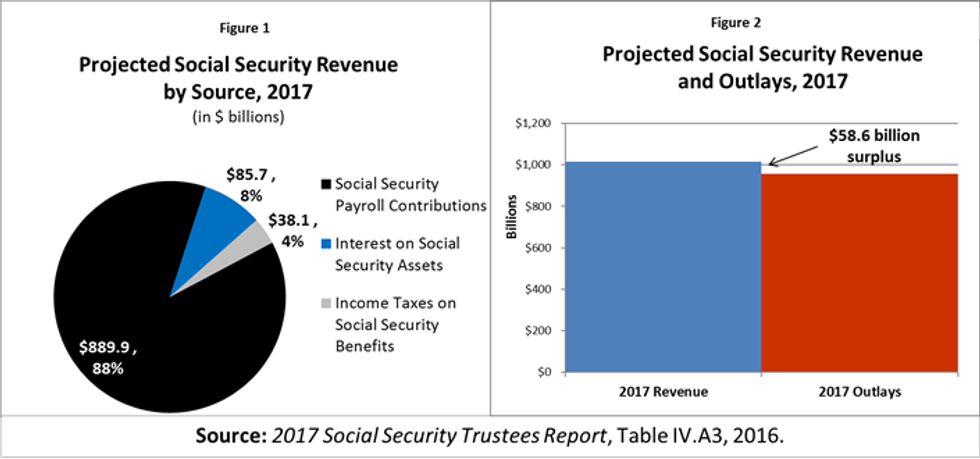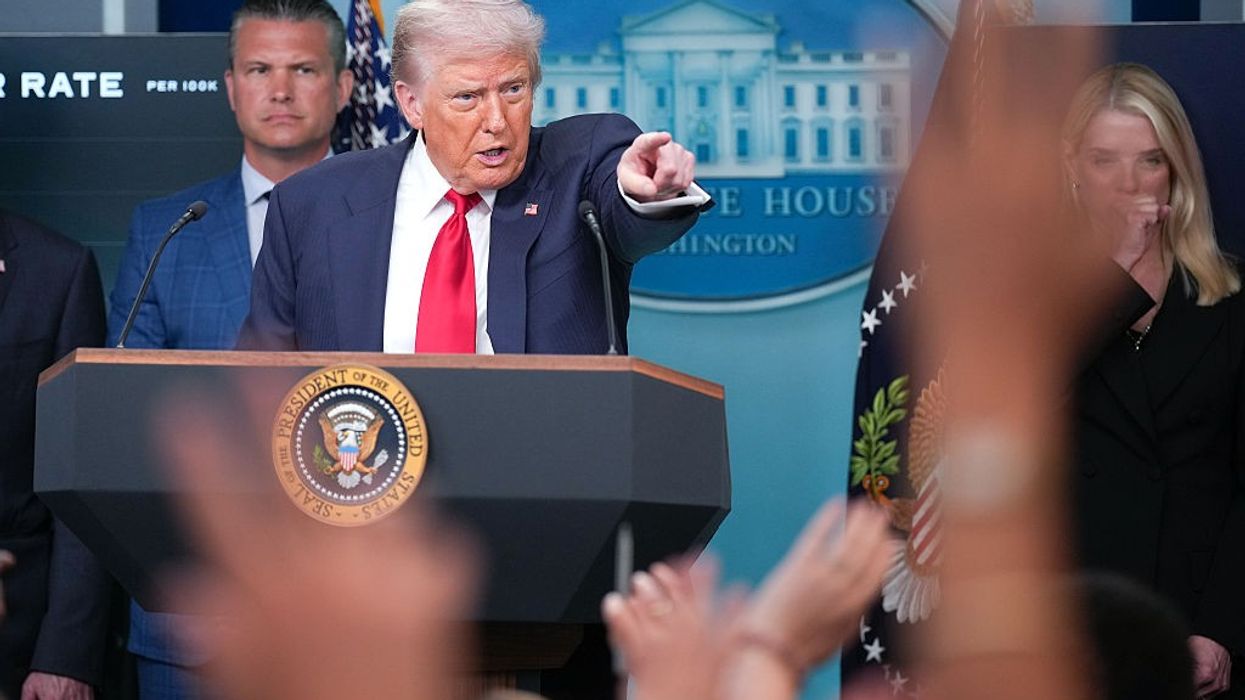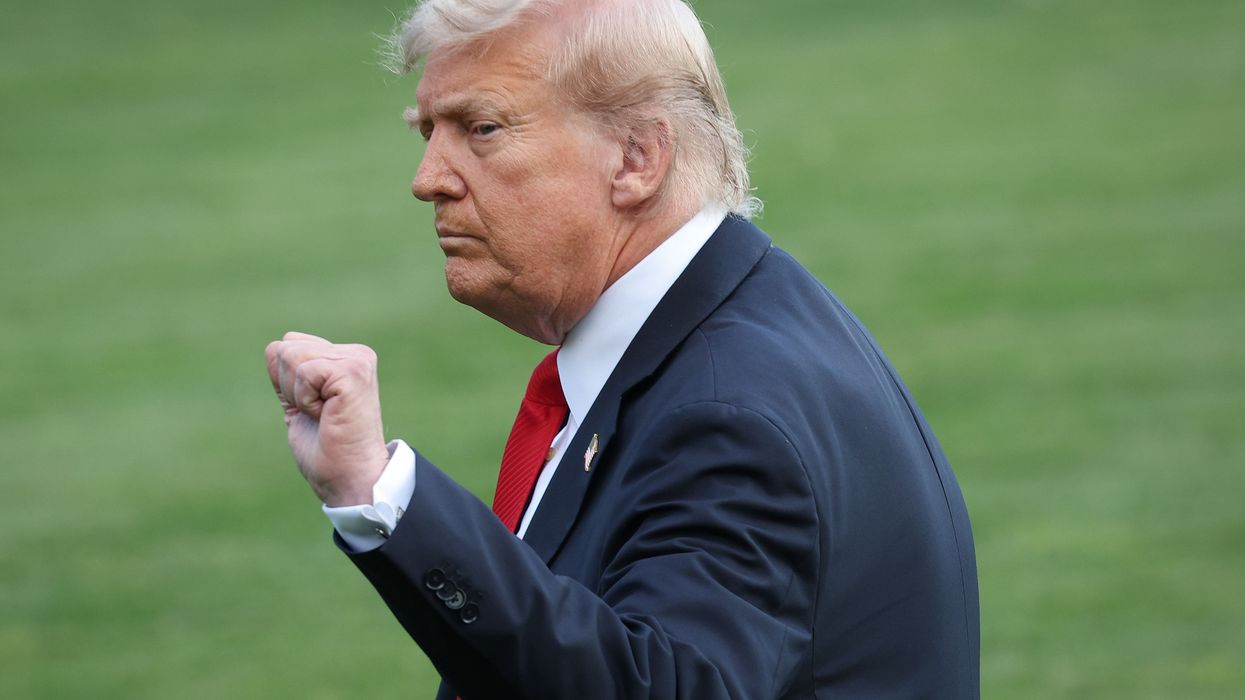July, 13 2017, 05:00pm EDT

2017 Social Security Trustees Report Shows That Social Security Continues to Work for America
An Expanded Social Security Will Work Even Better
WASHINGTON
As reporters cover the just-released 2017 Social Security and Medicare Trustees Reports, Social Security Works provides you with this fact sheet that summarizes and puts in context the Social Security report's key findings. This fact sheet updates the figures in the media backgrounder Social Security Works issued in advance of the Trustees Report's release. Please note that this fact sheet addresses only the Social Security's cash benefits Trustees Report (Old Age, Survivors, and Disability Insurance Trustees Report), and not deal with the Medicare Trustees Report.
In addition to reviewing this fact sheet, we invite you to speak with our president, Nancy Altman, who is a nationally recognized Social Security expert (see bio below). We also urge you to review our fact sheet that discusses, among other things, misinterpretations by non-experts caused by over- emphasis of unrealistically long valuation periods. You may also want to read Columbia Journalism Review's "Report Card on Social Security Coverage," written in response to coverage of the 2012 Trustees Report.
The most important takeaways from the 2017 Trustees Report are that (1) Social Security has a large and growing surplus, and (2) Social Security is extremely affordable. At its most expensive, in 2095, Social Security is projected to cost just 6.17 percent of gross domestic product ("GDP"). That is considerably lower, as a percentage of GDP, than Germany, Austria, France, and most other industrialized countries spend on their counterpart programs today! In 2016, Social Security constituted just 5 percent of GDP.
The report shows that Social Security is fully and easily affordable. The question of whether to expand or cut Social Security's modest benefits is a question of values and choice, not affordability. Indeed, in light of Social Security's near universality, efficiency, fairness in its benefit distribution, portability from job to job, and security, the obvious solution to the nation's looming retirement income crisis, discussed below, is to increase Social Security's modest benefits. The average annual benefit received by Social Security's over 61 million beneficiaries is less than $15,000 this year.
Moreover, expanding Social Security not only addresses the retirement income crisis, it also is part of the answer to growing income and wealth inequality and the financial squeeze on working families. Expanding, not cutting, Social Security while requiring the wealthiest among us to contribute more - indeed, their fair share - is the best policy approach to addressing these challenges while restoring Social Security to long-range actuarial balance. Cutting those modest benefits will only exacerbate these challenges.
That is perhaps why the Democratic Party strongly favors expanding, not cutting Social Security. The 2016 Democratic Platform states:
We will fight every effort to cut, privatize, or weaken Social Security, including attempts to raise the retirement age, diminish benefits by cutting cost-of-living adjustments, or reducing earned benefits. Democrats will expand Social Security
Consistent with that pledge, nearly 20 Social Security expansion bills have been introduced in the House and Senate just since 2015. Recently, the Social Security 2100 Act, introduced by Rep. John Larson (D-CT01), has 158 cosponsors in the House of Representatives--the largest number of supporters for any expansion bill ever
The report projects that Social Security's cumulative surplus will be $2.9 trillion in 2017, growing to about $3 trillion around 2021. It reports that Social Security is fully funded for the next decade, 93 percent funded for the next 25 years, 87 percent funded over the next 50 years, and 84 percent funded over the next 75 years. Without a single penny of additional revenue, Social Security will have sufficient income and assets to pay all benefits to America's seniors, people with disabilities, and survivors of deceased workers, as well as all associated administrative costs, for around one and a half decades, until 2034, and 77 percent of all benefits and associated administrative costs thereafter. Moreover, the report shows that, with modest legislated increases in revenue, Social Security will be able to pay all scheduled benefits for the foreseeable future.
More specifically, journalists may want to give special attention to the following:
Income to Social Security from all sources exceeds all expenditures in 2017, which is why the program's reserves will continue to grow (see Figure 2 on p. 2). As Figure 1 (see p. 2) shows, Social Security has three revenue sources: 1) wage contributions from employees, matched by employers; 2) investment earnings on Social Security's U.S. Treasury bond holdings (which have the same legal standing and status as other interest-bearing Treasury bonds issued by the government); and 3) dedicated income taxes on the Social Security benefits of those with higher incomes.
It is sometimes reported that Social Security is paying out more money in benefits than it is collecting in income, but that is wrong. This claim counts only Social Security's income from payroll contributions, disregarding one or both of its other two dedicated sources of income: investment income and dedicated income tax revenue, as stated above. While viewing Social Security's finances in this fashion, i.e. ignoring one or two of its three sources of revenue, portrays it in "cash deficit," this view (and term) has no legal meaning with regard to Social Security's finances, and no bearing on its ability to pay benefits. Indeed, so-called "cash deficits" have happened 29 times since 1957, without ever affecting the system's ability to pay benefits. Moreover, as Figure 2 shows, when income from all of Social Security's statutory revenue sources is counted its 2017 revenue is projected to surpass its outlays.
The nation is facing a looming retirement income crisis where most workers will be unable to cease work without a drastic reduction in their standards of living. Over half (52 percent) of American households headed by someone of working age will not be able to maintain their standard of living in old age, and this figure rises to roughly two-thirds when health and long-term care costs are also considered. Traditional employer-sponsored defined benefit pension plans are disappearing, leaving workers with, at best, defined contribution retirement savings plans, which have proven inadequate. Around half of households aged 55 or older had zero retirement savings in 2013. Among those households age 55-64 with some retirement savings in 2013, the median amount of those savings was about $104,000, equivalent to an annuity of just $310 a month. Thus, it is not surprising that today two-thirds of senior beneficiaries rely on Social Security for a majority of their income. Social Security will certainly be even more important to tomorrow's seniors.
As important as restoring Social Security to long-range actuarial balance is, it is imperative to remember that it is simply a means to the end of providing America's families with basic economic security. Recognizing that Social Security is a solution to our looming retirement crisis and other challenges facing the nation, serious analysts, and a growing number of policymakers and nonprofit organizations have advanced responsible, fully-funded proposals to expand Social Security.
Social Security Works' mission is to: Protect and improve the economic security of disadvantaged and at-risk populations; Safeguard the economic security of those dependent, now or in the future, on Social Security; and Maintain Social Security as a vehicle of social justice.
LATEST NEWS
Trump Administration Has ‘Made the Decision to Attack Military Installations Inside Venezuela’: Report
"Trump’s military buildup in the Caribbean isn’t about 'drugs,' it’s about oil, power, and regime change," said on critic of potential strikes in Venezuela.
Oct 31, 2025
Two reports claim that the Trump administration is poised to launch strikes against military targets inside Venezuela.
The Wall Street Journal reported on Thursday night that the administration is preparing to attack a variety of targets inside Venezuela, including "ports and airports controlled by the military that are allegedly used to traffic drugs, including naval facilities and airstrips."
Reports from the US government and the United Nations have not identified Venezuela as a significant source of drugs that enter the United States, and the country plays virtually no role in the trafficking of fentanyl, the primary cause of drug overdoses in the US.
While the WSJ report said that the administration had not yet decided to carry out the operations against Venezuela, the Miami Herald reported on Friday morning that the administration "has made the decision to attack military installations inside Venezuela and the strikes could come at any moment."
A source who spoke with the Miami Herald didn't explicitly say that Venezuelan leader Nicolás Maduro would be the target of these actions, but they nonetheless hinted that the goal was to weaken his grip on power.
"Maduro is about to find himself trapped and might soon discover that he cannot flee the country even if he decided to,” the source said. “What’s worse for him, there is now more than one general willing to capture and hand him over, fully aware that one thing is to talk about death, and another to see it coming."
While the Trump administration has accused Maduro of leading an international drug trafficking organization called the Cartel de los Soles, some experts have expressed extreme skepticism of this claim.
Phil Gunson, analyst at the International Crisis Group think tank, said in an interview with Agence Presse-France earlier this year that he doubts that so-called "Cartel de los Soles" even exists, and noted that "direct, incontrovertible evidence has never been presented" to show otherwise.
Earlier this year, the administration attempted to tie Maduro to another gang, Tren de Aragua, despite US intelligence agencies rejecting the notion that the street gang had government connections.
Launching strikes on Venezuelan soil would mark a major escalation in the administration's military campaign targeting purported drug traffickers, which so far has consisted of drone strikes against boats in international waters that many legal experts have described as a campaign of extrajudicial murder.
Dozens of political leaders throughout Latin America earlier this month condemned the administration's attacks on the purported drug boats, and they warned that they could just be the start of a regime change war reminiscent of the coups carried out by the US government in the last century that installed military dictatorships throughout the region.
"We have lived this nightmare before,” they emphasized in a joint letter. “US military interventions of the 20th century brought dictatorships, disappearances, and decades of trauma to our nations. We know the terrible cost of allowing foreign powers to wage war on our continent. We cannot—we will not—allow history to repeat itself.”
Medea Benjamin, cofounder of anti-war group CodePink, accused the Trump administration of using a fight against alleged drug trafficking as a false pretext to seize Venezuela's vast oil reserves.
"Trump’s military buildup in the Caribbean isn’t about 'drugs,' it’s about oil, power, and regime change," she wrote in a post on X. "Venezuela has the largest proven oil reserves in the world, that’s why they’re escalating toward war."
Keep ReadingShow Less
Dems Failed to Scrap Filibuster Under Biden. Now Trump Wants 'Nuclear Option' to End Shutdown
"I hate to say I told you so but... I fucking told you so," wrote progressive journalist Mehdi Hasan, who repeatedly urged Senate Democrats to end the filibuster during Joe Biden's presidency.
Oct 31, 2025
US President Donald Trump late Thursday urged Senate Republicans to scrap the legislative filibuster to end the prolonged government shutdown without Democratic support—the kind of scenario progressives warned about when imploring Democrats to eliminate the 60-vote threshold during former President Joe Biden's term.
In an all-caps post to Truth Social, Trump wrote that "THE CHOICE IS CLEAR—INITIATE THE 'NUCLEAR OPTION,' GET RID OF THE FILIBUSTER AND, MAKE AMERICA GREAT AGAIN!"
Trump noted Democrats' failure to terminate the filibuster when they controlled Congress under Biden, pointing specifically to the central role that Joe Manchin and Kyrsten Sinema—both of whom have since left office and the Democratic Party—played in obstructing filibuster reform.
"Just a short while ago, the Democrats, while in power, fought for three years to do this, but were unable to pull it off because of Senators Joe Manchin of West Virginia and Kyrsten Sinema of Arizona. Never have the Democrats fought so hard to do something because they knew the tremendous strength that terminating the Filibuster would give them," Trump wrote. "Now I want to do it in order to take advantage of the Democrats."
With the filibuster intact, 60 votes are required to pass most legislation in the Senate. Republicans currently hold 53 Senate seats.
Progressives warned repeatedly during Biden's presidency that Republicans wouldn't hesitate to scrap the filibuster in the future should the 60-vote threshold become a severe hindrance to their agenda. Abolishing the legislative filibuster to end the shutdown would clear the way for other Republican policy proposals to get through the Senate with simple-majority support.
"I spent the entire Biden presidency warning idiotic establishment Senate Dems and Biden who opposed getting rid of the filibuster that Trump and the GOP would come back to power and do it themselves," journalist Mehdi Hasan wrote Thursday in response to the president's demands. "I hate to say I told you so but... I fucking told you so."
Adam Jentleson, former chief of staff for Sen. John Fetterman (D-Pa.) and a vocal advocate of ending the filibuster, noted that "it's pretty easy" to initiate the "nuclear option" on the filibuster "because despite everything, the Senate is a majority rule institution, per the Founders' design."
"The rule that overrides all other rules is that a majority of senators can vote at any time to change the rules—including getting rid of the filibuster, which the Founders abhorred anyway," Jentleson wrote late Thursday. "They could do it tomorrow! No preparation needed."
Trump's demand comes as millions of people across the US are set to lose federal nutrition assistance due to the shutdown and the administration's illegal refusal to tap emergency funds to pay out the benefits.
Millions of Americans are also facing the prospect of skyrocketing health insurance premiums as Trump and congressional Republicans decline to support extending Affordable Care Act subsidies that are set to expire at the end of the year.
Senate Majority Leader John Thune (R-S.D.) said earlier this month that he would oppose scrapping the filibuster to end the shutdown, but he could change his position amid Trump's pressure campaign.
One progressive, Rep. Ro Khanna (D-Calif.), has called for a filibuster carveout that would allow senators to keep the government open with a simple-majority vote.
"I've been consistent on this," Khanna said in an interview in early October. "I said this when Biden was president, and I'm now saying it when Trump's president."
Keep ReadingShow Less
Trump Ripped for 'Absurdly Low' and 'Racist' Refugee Cap Prioritizing White South Africans
"Let's call this what it is—white supremacy disguised as refugee policy," said the head of the Haitian Bridge Alliance.
Oct 30, 2025
After months of reporting, President Donald Trump's administration on Thursday officially announced that it is restricting the number of refugees for this fiscal year to 7,500, with most spots going to white South Africans—a policy swiftly denounced by human rights advocates and Democrats in Congress.
"This decision doesn't just lower the refugee admissions ceiling. It lowers our moral standing," said Krish O'Mara Vignarajah, president and CEO of Global Refuge. "For more than four decades, the US refugee program has been a lifeline for families fleeing war, persecution, and repression. At a time of crisis in countries ranging from Afghanistan to Venezuela to Sudan and beyond, concentrating the vast majority of admissions on one group undermines the program's purpose as well as its credibility."
The Trump administration's notice in the Federal Register doesn't mention any groups besides Afrikaners, white descendants of Europeans who subjected South Africa's majority Black population to a system of apartheid for decades. Multiple rich Trump backers—including Tesla CEO Elon Musk, venture capitalist David Sacks, and Palantir founder Peter Thiel—spent time in the country during those years.
The 7,500 cap, initially reported earlier this month, is a significant drop from both the 40,000 limit that was previously reported as under consideration by the Republican administration, and the more than 100,000 allowed under former Democratic President Joe Biden.
Four congressional Democrats who serve as ranking members on related committees—Reps. Jamie Raskin (Md.) and Pramila Jayapal (Wash.), along with Sens. Dick Durbin (Ill.) and Alex Padilla (Calif.)—issued a joint statement condemning the new cap, which they noted is "an astonishing 94% cut over last year and the lowest level in our nation's history."
"To add insult to injury, the administration is skipping over the tens of thousands of refugees who have been waiting in line for years in dire circumstances to come to the United States, and it is instead prioritizing a single privileged racial group—white South African Afrikaners—for these severely limited slots," they said. "This bizarre presidential determination is not only morally indefensible, it is illegal and invalid."
The four lawmakers continued:
The administration has brazenly ignored the statutory requirement to consult with the House and Senate Judiciary Committees before setting the annual refugee admissions ceiling. That process exists to ensure that decisions of such great consequence reflect our nation's values, our humanitarian commitments, and the rule of law, not the racial preferences or political whims of any one president.
The reason for this evasion is evident: The administration knows it cannot defend its egregious policy before Congress or the American people. While nearly 130,000 vetted, approved refugees—men, women, and children fleeing persecution and violence—wait in limbo after being promised a chance at safety, Donald Trump is looking to turn refugee admissions into another political giveaway for his pet projects and infatuations.
We reject this announcement as both unlawful and contrary to America's longstanding commitment to offer refuge to the persecuted. To twist our refugee policy into a partisan straightjacket is to betray both our legal obligations and our moral identity as a nation.
"Let's call this what it is—white supremacy disguised as refugee policy," declared Guerline Jozef, executive director of Haitian Bridge Alliance. "At a time when Black refugees from Haiti, Sudan, the Congo, and Cameroon are drowning at sea, languishing in detention, or being deported to death, the US government has decided to open its arms to those who already enjoy global privilege. This is not just immoral—it's anti-Blackness codified into federal policy."
This week alone, Hurricane Melissa killed more than 20 people in Haiti, and health officials said that the Rapid Support Forces, which are fighting against Sudan's government, killed over 1,500 people—including more than 460 systematically slaughtered at a maternity hospital—in the city of el-Fasher.
"We reject the idea that whiteness equates to worthiness," Jozef said of Trump's new refugee plan. She also took aim at the president's broader anti-immigrant policy, which has included deporting hundreds of people to El Salvador's so-called Terrorism Confinement Center (CECOT).
"From Del Rio to Lampedusa, Black migrants and other immigrants of color have been criminalized, beaten, caged, and disappeared in CECOT camp in El Salvador—while their humanity is debated like a policy variable," she said. "This moment demands our humanity, our resistance, not silence."
Amy Fischer, Amnesty International USA's director for refugee and migrant rights, also tied Thursday's announcement to the broader agenda of the president—who, during his first term, faced global condemnation for policies including the forcible separation of families at the southern border.
"Setting this cap at such an absurdly low number and prioritizing white Afrikaners is a racist move that will turn the US's back on tens of thousands of people around the world who are fleeing persecution, violence, and human rights abuses," said Fischer. "Refugees have a human right to protection, and the international community—including the United States—has a responsibility to uphold that right."
"This announcement is yet another attack by the Trump administration on refugees and immigrants, showing disregard for international systems meant to protect human rights," she added. "The Trump administration must reverse course and ensure a fair, humane, and rights-based refugee admissions determination."
The announcement came just days after Trump's nominee to be ambassador to South Africa, far-right media critic Brent Bozell, faced intense criticism for refusing to say whether he would support or oppose repealing laws allowing Black Americans to vote during his Senate confirmation hearing.
Keep ReadingShow Less
Most Popular



